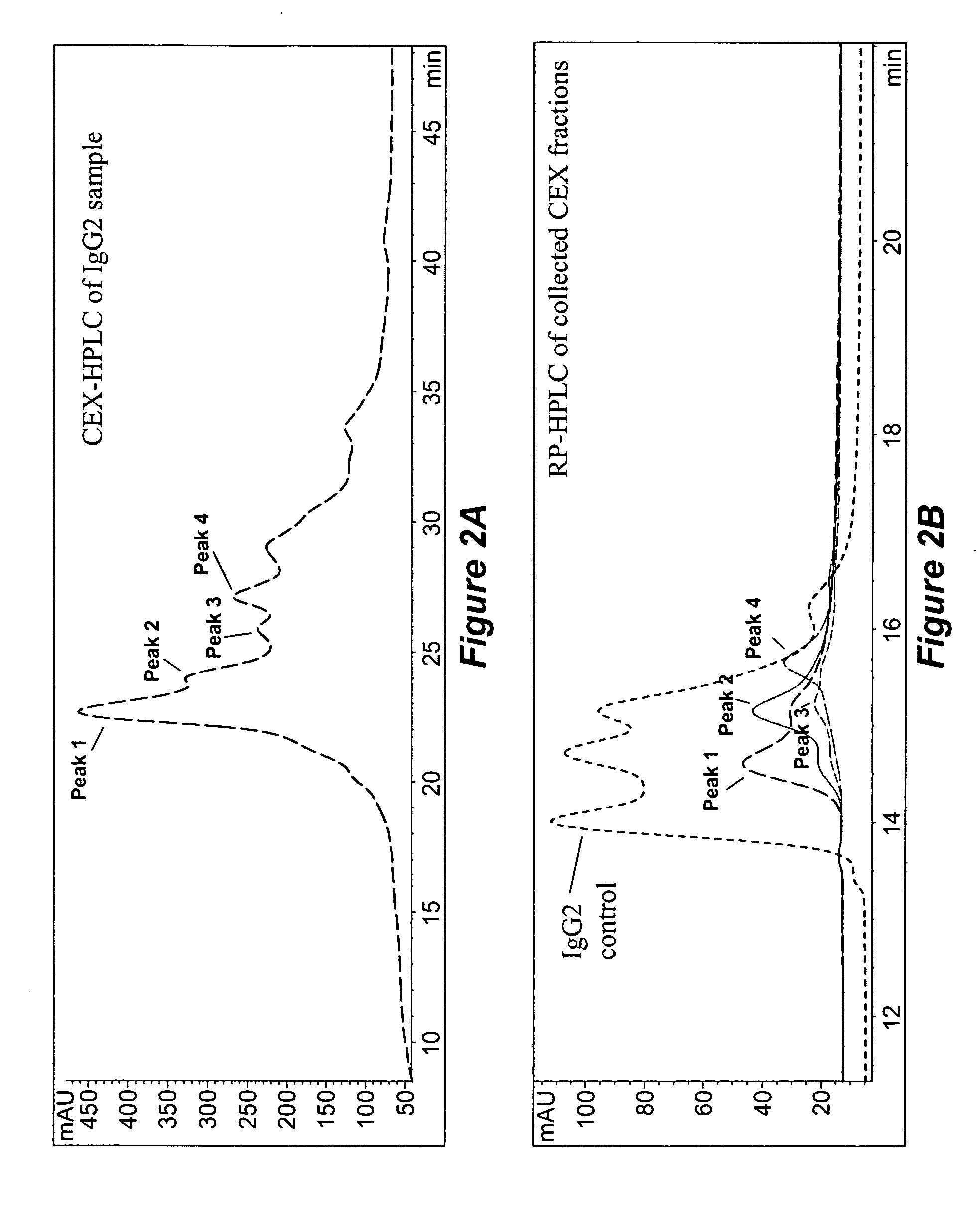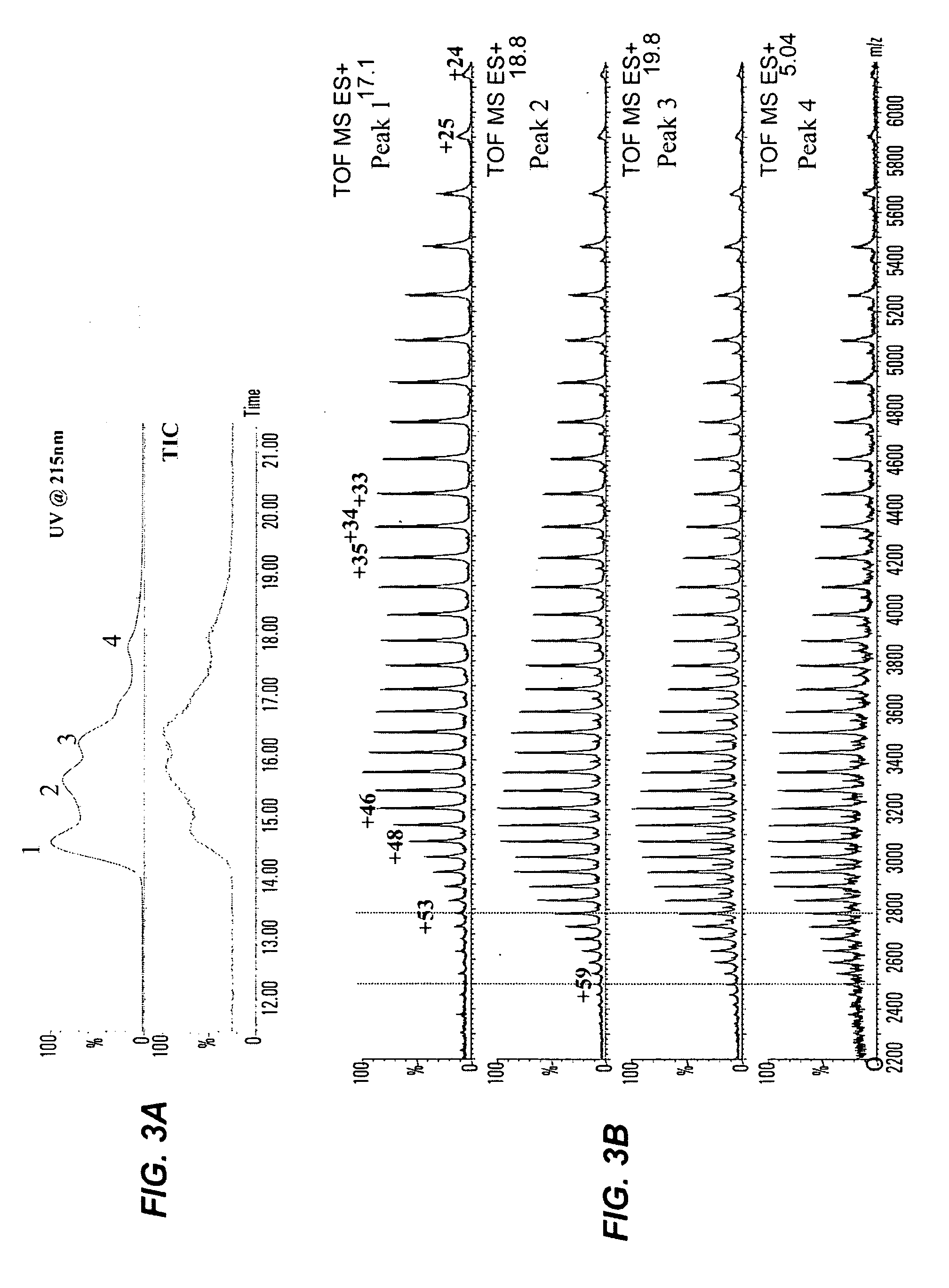Methods for refolding of recombinant antibodies
a refolding and antibody technology, applied in the field of refolding recombinant antibody proteins, can solve the problems of insufficient or little success, many important target proteins are at best inefficiently expressed in soluble form, and achieve efficient and economic production, facilitate the formation of native-like disulfide bonds, and improve pharmaceutical and crystallization properties
- Summary
- Abstract
- Description
- Claims
- Application Information
AI Technical Summary
Benefits of technology
Problems solved by technology
Method used
Image
Examples
example 1
[0197] Discussion of Refolding of Proteins
[0198] Refolding of proteins produced in E. coli. Advances in refolding of proteins produced in E. coli were recently reviewed by Rudolph and coworkers (Lilie et al., 1998; Rudolph and Lilie, 1996). The authors pointed that protein folding is one of the most complicated mechanism in the machinery of the protein production and “the specific conditions regarding buffer composition, protein concentration, temperature, and so on, has to be optimized for every protein.” The incorrect disulfide bonds is one of the problems. One mean “to enhance correction of incorrect disulfide bonds in the periplasm of E. coli is to over express the endogenous periplasmic DsbC protein, which is a disulfide isomerase. Another way is cultivation in the presence of thiol reagents, which lead to reshuffling of incorrect disulfide bonds, has been proven to enhance the yield of native proteins containing multiple disulfide bonds (Glockshuber et al., Verbessereung der ...
example 2
Recognition of Structural Heterogeneity in Human Monoclonal IgG2 Antibodies
[0202] X-ray crystallography pictures of human IgG1 antibodies have been published in several reports (Saphire et al., Science, 293:1155-1159, 2001; Saphire et al., J. Mol. Biol., 319:9-18, 2002). For example, Saphire et al., (2001), showed an X-ray crystallography trace of human IgG1 b12 antibody. However, to date there has been no resolution of the X-ray crystal structures of IgG2 antibody. The present invention shows that human IgG2 antibodies posses structural heterogeneity, and such heterogeneity may be responsible for the difficulties in producing an X-ray crystallographic data for IgG2.
[0203] Data from reversed-phase (RP) HPLC / MS and cation-exchange (CEX) HPLC methods experiments showed that all studied humanized IgG2 antibodies show multiple peaks on RP and CEX chromatograms, while IgG1 antibodies elute as single peak. FIG. 1 shows RP chromatograms of recombinant human antibodies with the same CDRs ...
example 3
Refolding of IgG2 Antibodies in the Presence of Redox Reagents Reduces Structural Heterogeneity of IgG2 and Increases its Activity
[0208] The above-described studies led to the idea of refolding the IgG2 antibody in order to verify its activity. The refolding was done by incubating the antibody in a cysteine-cystine containing buffer, at pH 8, 4° C. for 72 hours.
[0209] A preferred redox coupling system employed herein is the cysteine / cystine as reduction / oxidation coupling reagents. The starting material was a purified preparation of IgG2 antibody. Buffers were 0.1 M citrate or 0.2 M Tris at pH 8.5. Protein concentration of the IgG2 in the reaction was varied from 0.5 mg / mL to 10 mg / mL. In preferred examples the protein was varied from 2.5 mg / mL to 3 mg / mL.
[0210] The redox coupling system of L-cysteine (varying from 0 to 50 mM) was utilized and the procedure was assessed in the presence or absence of equal amounts of L-cystine and in the presence and absence of 1 mM EDTA. Incubati...
PUM
| Property | Measurement | Unit |
|---|---|---|
| concentration | aaaaa | aaaaa |
| concentration | aaaaa | aaaaa |
| temperature | aaaaa | aaaaa |
Abstract
Description
Claims
Application Information
 Login to View More
Login to View More - R&D
- Intellectual Property
- Life Sciences
- Materials
- Tech Scout
- Unparalleled Data Quality
- Higher Quality Content
- 60% Fewer Hallucinations
Browse by: Latest US Patents, China's latest patents, Technical Efficacy Thesaurus, Application Domain, Technology Topic, Popular Technical Reports.
© 2025 PatSnap. All rights reserved.Legal|Privacy policy|Modern Slavery Act Transparency Statement|Sitemap|About US| Contact US: help@patsnap.com



